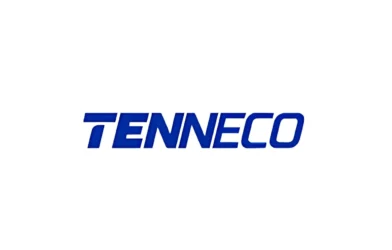Bengaluru, September 18, 2025
Indian savings-focused fintech Jar has achieved profitability, marking a significant milestone in its journey to democratize financial savings for the country’s vast population. The Bengaluru-based startup, founded in 2021, has quietly built a massive user base of more than 35 million individuals spread across nearly 12,000 ZIP codes in India. What sets Jar apart is its ability to onboard people who have never saved or invested before—more than 95% of its users are first-time savers.
Building a Culture of Saving
India has long grappled with a paradox: despite being one of the fastest-growing economies in the world, a large proportion of its population lacks access to formal saving and investment products. For decades, banks, mutual funds, and stockbrokers largely catered to urban middle- and upper-class consumers, leaving rural and semi-urban populations on the sidelines.
Jar’s founders recognized this gap and built a product designed to encourage micro-savings through something familiar and culturally rooted: gold. Gold has historically been a trusted store of value for Indian households, particularly in smaller towns and villages. By allowing users to invest as little as ₹10 daily into digital gold, Jar aligned its business with deep-seated cultural habits while lowering the entry barrier.
How Jar Works
The app integrates with digital payment platforms like UPI. Every time a user makes a digital transaction, it offers the option to “round up” the amount and invest the spare change into digital gold. This small but consistent investment builds a savings habit without feeling like a financial burden.
For example, if a user spends ₹93 on UPI, Jar rounds it to ₹100 and automatically invests ₹7 into digital gold. Over time, these micro-deposits add up, giving users a sense of financial security.
The model’s genius lies in its simplicity—no paperwork, no jargon, no intimidating financial charts. The app gamifies saving, rewarding users for milestones and encouraging consistency. This approach resonates strongly with tier-2 and tier-3 cities, where financial literacy and access to traditional investment channels remain limited.
Growth Story: From Startup to Profitable Fintech
Jar’s journey from launch to profitability in just four years is impressive in a fintech sector where customer acquisition costs and compliance expenses often delay break-even. According to company disclosures, the startup’s 35 million user base is not only large but also highly engaged.
Roughly 60% of its customers hail from tier-2 and tier-3 towns, proving its ability to penetrate beyond metro cities. The firm has focused on sustainable growth by keeping marketing spend efficient, leveraging word-of-mouth, and emphasizing trust—a crucial factor in financial services.
By mid-2025, the company’s revenues, driven by transaction fees and partnerships, overtook its costs, officially making Jar a profitable entity. This is a rare achievement in India’s crowded fintech market, where many startups continue to burn investor capital in pursuit of scale.
Why Profitability Matters
Profitability is more than just a financial milestone for Jar—it signals a sustainable business model in a sector where many players struggle to balance growth and compliance. The Indian fintech space has witnessed regulatory crackdowns, especially from the Reserve Bank of India (RBI), around payments, lending, and digital wallets.
Its strategy of staying focused on savings, rather than entering risky lending markets, has shielded it from many regulatory hurdles. It also helps that gold, as an asset, is relatively stable, trusted, and easily liquidated by users.
For investors and stakeholders, Jar’s profitability is proof that financial inclusion can be pursued responsibly while still delivering returns. It also positions Jar as a potential leader in India’s micro-savings and wealth-tech category.
Broader Implications for Financial Inclusion
Jar’s success underscores a broader shift in India’s fintech story. While payment giants like PhonePe and Paytm built infrastructure for digital transactions, companies like Jar are now creating the next layer: financial discipline and wealth creation for the masses.
The fact that 95% of Jar’s users are first-time savers has long-term implications. By nudging millions into the formal savings ecosystem, Jar contributes to building household resilience, reducing reliance on informal credit, and eventually expanding the pool of investors in India’s capital markets.
Economists often note that India’s household savings rate, though high in absolute terms, is disproportionately tied up in physical assets like gold and real estate. Jar’s model of digitizing gold savings is an important step toward channeling savings into accessible, liquid, and formal financial instruments.
The Road Ahead
Having proven its profitability, Jar now faces the challenge of scaling responsibly. Industry insiders suggest that the company may explore expansion into mutual funds, recurring deposits, or even government-backed schemes—always keeping simplicity and accessibility at the core.
However, Jar must tread carefully. The fintech market in India is intensely competitive, and larger players with deeper pockets may attempt to replicate its model. Additionally, as the RBI continues to tighten fintech regulations, Jar will need to maintain compliance without losing its user-friendly appeal.
Still, with a loyal customer base and profitability under its belt, Jar is well-positioned to chart the next phase of its growth.
Conclusion
Jar’s story is more than just a fintech success; it is a case study in how technology, culture, and behavioral design can come together to solve one of India’s oldest economic challenges: the lack of formal saving habits among millions of households. By turning spare change into gold, Jar has not only achieved profitability but also reshaped how Indians, particularly in smaller towns, think about money.
In a sector often criticized for chasing growth at any cost, Jar’s approach offers a refreshing blueprint: profit with purpose.
Disclaimer: This article is based on information available from public sources. It has not been reported by EQMint journalists. EQMint has compiled and presented the content for informational purposes only and does not guarantee its accuracy or completeness. Readers are advised to verify details independently before relying on them.









